Today’s Current Affairs: 22nd April 2025 for UPSC IAS exams, State PSC exams, SSC CGL, State SSC, RRB, Railways, Banking Exam & IBPS, etc
Table of Contents
INS Chennai and INS Kesari:
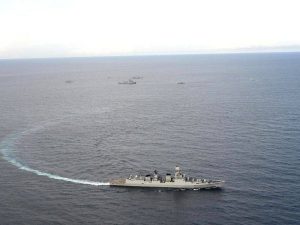
Indian Navy ships INS Chennai and INS Kesari successfully carried out manoeuvring exercises and Visit, Board, Search & Seizure (VBSS) drills during the sea phase of Africa India Key Maritime Engagement (AIKEYME) 2025.
- It is the third and last ship of the Kolkata-class stealth-guided missile destroyers (Project 15A) of the Indian Navy.
- The first two ships to be manufactured under Project 15A were INS Kolkata and INS Kochi.
- INS Chennai was constructed by the Mazagon Dock Limited (MDL) at Mumbai.
- It was commissioned into the Indian Navy on November 21, 2016.
- It is placed under the operational and administrative control of the Western Naval Command.
- INS Kesari (L15) is a Shardul Class Landing Ship Tank (LST) of the Indian Navy.
- The ship was built by Garden Reach Shipbuilders and Engineers (GRSE), Kolkata.
- It was commissioned into the Indian Navy on 5 April 2008.
- The ship is capable of carrying troops, tanks, armored vehicles, and other military equipment.
- It is designed to support amphibious operations and humanitarian assistance and disaster relief (HADR) missions.
Pir Panjal Railway Tunnel:
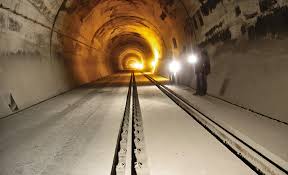
The Udhampur-Srinagar-Baramulla Rail Link’s (USBRL) completion, marked by the Katra–Sangaldan section, ensures year-round, faster rail access to the Kashmir Valley.
- The Pir Panjal Railway Tunnel, also known as the Banihal Railway Tunnel, is currently India’s longest transportation railway tunnel, measuring 2 kilometers in length.
- It is part of the Udhampur–Srinagar–Baramulla Rail Link (USBRL) and connects Quazigund in the Kashmir Valley with Banihal in Jammu, passing under the Pir Panjal mountain range.
- It is the only broad-gauge mountain railway tunnel in the country and part of the USBRL’s 202-km core segment.
- Pir Panjal Range is part of the Lesser Himalayas, spans across Himachal Pradesh and Jammu & Kashmir. With notable peaks include Indrasan (6,221 m) and Deo Tibba (6,001 m).
- It separates the Beas and Ravi Rivers from the Chenab River and is the origin zone for tributaries of the Jhelum and Indus Rivers.
- The Mughal Road traverses the Pir Panjal Pass (3,490 m) to link Poonch and Rajouri with Srinagar.
- The Jawahar Tunnel (2.5 km) under Banihal Pass connects Banihal to Qazigund.
- The region hosts famous destinations like Gulmarg and was historically an ancient trade route connecting Kashmir with mainland India.
Stem Cell Therapy for Parkinson’s Disease:
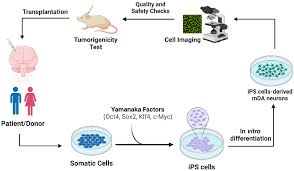
Researchers at Kyoto University conducted a Phase I/II clinical trial to assess the safety and side effects of stem cell therapy using dopaminergic progenitors derived from human induced pluripotent stem cells (iPSCs).
- Parkinson’s disease is a neurodegenerative disorder that causes the progressive loss of dopamine-producing neurons in the brain.
- Dopamine is a critical neurotransmitter responsible for regulating motor functions.
- The conventional treatment mainly involves dopaminergic medications, but these do not restore lost neurons and may have long-term side effects.
- Pluripotent Stem Cells (iPSCs) are pluripotent stem cells generated from adult somatic cells (like skin or blood).
- They are reprogrammed to an embryonic-like state, allowing them to develop into any human cell type.
- Used in:
- Diabetes (converted into beta cells),
- Leukaemia (to generate new blood cells),
- Neurological diseases.
- iPSCs are valuable in drug testing, disease modeling, and transplantation medicine.
- Stem Cells : Stem cells are undifferentiated primitive cells capable of developing into specialised cells like blood, muscle, or liver cells. Their ability to self-renew and differentiate makes them vital for regeneration and repair.
Enzymes and Coenzymes:
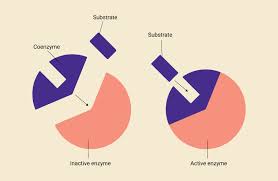
The recent issue of Nature highlighted biofortified rice varieties, a major breakthrough from CAS, Beijing, under the title ‘Gene-edited plants make the jump from farm to factory’.
- Enzymes are proteins that catalyze biochemical reactions, enhancing the efficiency of cellular metabolism.
- Many enzymes require helper molecules for proper function. These are called cofactors, and when they are organic molecules, they are termed coenzymes.
- Coenzymes bind to enzymes and support their activity, playing a crucial role in various metabolic pathways.
- Coenzyme Q (CoQ), also known as ubiquinone, is an organic antioxidant molecule with multiple isoprene units.
- It exists in ten different forms, from CoQ1 to CoQ10, and is lipid-soluble but water-insoluble.
- Coenzyme Q is vital for mitochondrial function and is found in every cell membrane, where it aids cellular energy production.
- CoQ9, containing nine isoprene units, is predominantly produced in cereal crops such as wheat, rice, oats, barley, corn, rye, and millet.
- It is also found in bamboo, barley, and flowering plants like cinnamon, avocado, and pepper.
- CoQ10 is an essential part of the mitochondrial electron transport chain, generating the majority of the body’s cellular energy.
- Organs like the heart, which have high energy demands, contain high levels of CoQ10.
- Although CoQ9 is available in staple foods, humans require additional CoQ10 due to genetic factors, aging, and neurological disorders.
Lower Subansiri Hydroelectric Project:
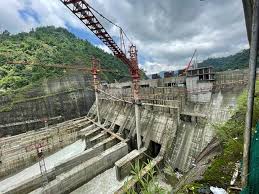
The NHPC’s plan to start generating electricity from the 2000 megawatt Lower Subansiri Hydroelectric Project (LSHP) has triggered downstream impact worries in Assam.
- It is a 2000 MW run-of-the-river hydro project being constructed on the Subansiri River, a tributary of the Brahmaputra.
- It is located on the borders of Arunachal Pradesh and Assam.
- The project is being developed by the state-run National Hydro Power Corporation (NHPC).
- It consists of a concrete gravity dam, which will be 116 m high from the riverbed level and 130 m from the foundation.
- The length of the dam will be 284 m. The gross storage capacity of the reservoir will be 1.37 km3.
- The powerhouse will be equipped with eight 250 MW Francis turbines located on the surface on the left bank of the river.
- It will also have eight horseshoe-shaped headrace tunnels (diameter 9.5m and length varying from 608m to 1,168m), eight horseshoe-shaped surge tunnels (diameter 9.5m and length varying from 400m to 485m), and eight circular penstocks (diameter varying between 400m and 485m and length between 7m and 9.5m).
- A tailrace channel (35m-long and 206m-wide) will take the water discharged by the turbines back to the river.
Davis Strait Proto-Microcontinent:
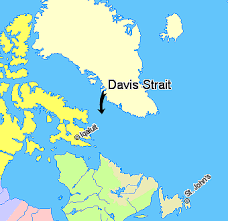
A hidden landmass called the Davis Strait proto-microcontinent has been found beneath the icy waters of the Davis Strait, the body of water that separates Canada’s Baffin Island from Greenland.
- Davis Strait Proto-Microcontinent is a newly discovered submerged microcontinent located around the Davis Strait, a large stretch of water located between Canada’s Baffin Island and Greenland.
- It has been named the Davis Strait proto-microcontinent since it formed owing to the tectonic evolution of the Davis Strait.
- The strait was formed millions of years ago when the tectonic plates between the two islands shifted, reconfiguring the Earth’s crust.
- This resulted in the formation of a thick continental crust in the ocean, which has now been declared a newly discovered primitive microcontinent.
- The microcontinent is 19–24 km thick thinned continental crust and is surrounded by two narrow bands of thin (15–17 km) continental crust.
- This crust separates it from mainland Greenland and Baffin Island.
- Davis Strait is a bay of the northern Atlantic Ocean, lying between southeastern Baffin Island (Canada) and southwestern Greenland.
- The strait separates the depths of Baffin Bay (north) from those of the Labrador Sea (south) and forms part of the Northwest Passage, a route through the Canadian Arctic Archipelago linking the Atlantic and Arctic oceans.
- It is approximately 400 miles (650 km) north to south and 200 to 400 miles wide.
- It is one of the broadest straits in the world.
- The Davis Strait is home to complex geological formations such as underwater basins and ridges that were created due to the strike-slip faulting along the Ungava Fault Zone around 45 to 62 million years ago.
- It triggered plate tectonic movements in the Labrador Sea and the Baffin Bay, leading to the formation of the Strait.
Pope Francis Passes Away:

Pope Francis (Jorge Mario Bergoglio), spiritual leader of the Roman Catholic Church, has passed away.
- The Pope is the Bishop of Rome and the visible head of the Catholic Church, which regards Jesus Christ as its invisible head.
- He is also known as the supreme pontiff, and his office is called the Papacy.
- He resides in Vatican City and has supreme authority over Catholics.
- He is elected by the College of Cardinals (senior officials) through a conclave (voting) and any baptized Catholic man can become Pope, but cardinals typically choose one of their own.
- Vatican City is the world’s smallest sovereign state. It is landlocked within Rome, Italy, and became independent from Italy with the signing of the Lateran Treaty in 1929.
- Governed by the Pope, who holds supreme authority over all branches of government, it operates independently, with its own postal system, financial structure, and no income tax.
- The city is home to St. Peter’s Basilica, Vatican Museums etc. Its revenue comes from global Catholic donations, investments, and sales of publications.
17th National Civil Services Day:
The Prime Minister addressed civil servants on the occasion of the 17th National Civil Services Day (21st April 2025) and honored the Prime Minister’s Awards for Excellence in Public Administration (PMAEPA). On National Civil Services Day, the historic representation of women in civil services was highlighted, with 74 women officers comprising 41% of the 2023 Indian Administrative Service (IAS) batch. It is observed on 21st April each year to honor the dedication of civil servants. First celebrated in 2006, it commemorates Sardar Vallabhbhai Patel’s address to the probationers of Administrative Services Officers at Metcalf House in Delhi, where he referred to the civil servants as the “steel frame of India” on 21st April 1947. PMAEPA instituted to recognize outstanding and innovative work by officers of the Central and State Governments. All government officers and organizations are eligible.
Heatwaves in India:
India witnessed severe heatwaves in March 2025 — 20 days earlier than in 2024 — highlighting the urgent need for short-term and long-term strategies to tackle heat stress and its cascading impacts.In India, a heatwave is declared when maximum temperature exceeds 40°C in plains and 30°C in hilly areas. It is intensified by factors like humidity, wind speed, and urban heat islands. Global warming and climate change are major contributors to the increased frequency and intensity.
Angstrom-scale Chip:
A team from IISc has submitted a proposal to the government to develop angstrom-scale semiconductor chips using 2D materials, aiming to position India as a leader in next-generation chip technologies.Angstrom-scale chips refer to semiconductor devices built at the atomic scale, where one angstrom equals 1 nanometres. Proposed and developed by scientists at the Indian Institute of Science (IISc), Bengaluru.
Bhutan Green Cryptocurrency:
Bhutan is exploring the mining of green cryptocurrency using hydropower to boost its economy, aiming to reduce youth brain drain and promote sustainable development.Green cryptocurrencies are digital currencies mined using renewable energy sources like hydro, wind, or solar instead of fossil fuels.
Automatic Number Plate Recognition (ANPR):
The Ministry of Road Transport and Highways (MoRTH) clarified that no decision has been made to implement GNSS-based tolling from May 1, 2025. Instead, an Automatic Number Plate Recognition (ANPR)-FASTag-based barrier-less toll system will be introduced at selected plazas.ANPR uses high-performance cameras to capture and read vehicle number plates, enabling automatic identification without manual intervention.
Justice Dinesh Maheshwari Appointed Chairperson of the 23rd Law Commission of India:
Justice (Retd.) Dinesh Maheshwari, a former Supreme Court judge, has been appointed as the Chairperson of the 23rd Law Commission of India in April 2025. The announcement marks a crucial step in the government’s ongoing efforts to review and recommend reforms in various aspects of Indian law, particularly the long-debated Uniform Civil Code (UCC). The 23rd Law Commission was formally constituted on September 1, 2024, with its term extending until August 31, 2027. It comprises a total of seven members, including: One Chairperson: Justice (Retd.) Dinesh Maheshwari, Four full-time members: Including Hitesh Jain (a lawyer) and P. Verma (an academician who was also part of the 22nd Law Commission),Two ex-officio members: From the Department of Legal Affairs and Legislative Department
SBI Deploys ‘Grahak Mitras’ to Boost Alternate Banking Channel Adoption:
The State Bank of India (SBI), India’s largest public sector bank, has unveiled a new customer engagement initiative by introducing ‘Grahak Mitras’ at select branches. These specially trained personnel, drawn from SBI’s subsidiary, State Bank Operations Support Services (SBOSS), will assist walk-in customers with alternate banking channels, helping to decongest busy branches and promote digital banking.




